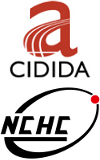What is Chronojump-Boscosystem?
Chronojump-Boscosystem is a non-profit organization (Asociación Chronojump para la Investigación y Difusión de la Tecnología Aplicada a la Actividad Física y el Deporte) established on 2014-September-25. The aim of the associaciation is to develop a set of tools to acquire, manage and analyze sport shorttime tests. It is a free academic solution used in the laboratory and in the field. Website is: chronojump.org.
Unlike most sports companies, we differentiate ourselves by adopting:
• A different philosophy: they do not create free software.
• A different objective: as a non-profit association our goal is not to make money.
Who are we in Chronojump-Boscosystem?
The main team of the Chronojump Association (who works on it every day) is:
-
Dr. Xavier de Blas: Professor at Universitat Ramon Llull. CEO and lead developer. President of the Association.
-
Dr. Josep M. Padullés: Professor at INEFC – University of Barcelona. CEO. Board member of the Association.
-
Mr. Xavier Padullés: Project manager in engineering and technical support. Software developer. Vice president of the Association.
-
Ms. Maribel Domínguez: Head of sales and purchases. Secretary of the Association.
-
Mr. Robert Urpinell: Head of production, technical support, order management, and post-sale service.
-
Ms. Maitane Ibañez: Head of production.
- Mr. Adolfo Benítez: CDO of Chronojump.
Xavier de Blas and Josep Mª Padullés do this work without charge. They understand the project as a contribution made from the university to the knowledge of society.
Many other contributors can be found in the Help / About window of the Chronojump software. These collaborators offer their help free of charge since they support free software / open software in an altruistic way.
What we do at Chronojump-Boscosystem?
• We offer instruments to be able to measure the sport with the objective that it is economically available for the greatest number of interested parties.
• We install our technology at sports clubs, universities and health centers.
• We provide generic and customized training courses.
• We organize the annual “Chronojump Award” in order to promote research in the sports field.
• We promote scientific knowledge in the school stage through projects with town halls, fairs and teacher training to facilitate the introduction of Chronojump in curricular didactic units.
• We continue to learn every day to be able to apply improvements to our products and services. This is possible thanks to the proximity and proposals of Chronojump users.
• We perform many other activities. We could highlight:
◦ Collaborations in scientific research conducted in world and European athletics championchips.
◦ Technology presentations for FIFA
◦ Advice and technological training for clubs with a great international reputation.
◦ Since 2016 we have implemented our client/server solution Chronojump Networks at gyms from elite teams.
Passion / money
The people involved in Chronojump believe a project is successful if users like it and if it contributes to the society. Passion is the reason for collaboration, not money.
Chronojump developers use substantial amounts of free software every day: Kinovea, Libreoffice, Linux, Mozilla Firefox, R, … Chronojump software itself is built using various types of free software: GNOME, Mono, Vim, Gstreamer, Python, … Our software has to be free in order to be consistent with the tools we use.
For further information, please see: “The Hacker Ethic and the Spirit of the Information Age”.
Free Software / Open Hardware and Science
The following text has been adapted from our article: “Creation and Validation of ChronojumpBoscosystem: A Free Tool to Measure Vertical Jumps”
The IT tools found for the measurement of power are black boxes. In other words, they can be used, but the user cannot have access to their content. Third parties are unable to completely verify the reliability of the tools, nor can they be adapted to individual needs. These tools are called “private software”.
Free software is the opposite: it encourages the study of software to understand how it works (internally), and change it, to ensure it will do what the user wishes it to. This demands access to the source code. It also encourages enhancements and makes it possible to release these to the public, so that the whole community benefits.
Parker (2000) described the implications of free software for science. According to the author, the scientific method is a process of discovery and of justification, and scientific results must be replicable. For this to happen, the software tools used have to be accessible in the future. Private software does not make the use of old versions of software easy, whereas with free software, all published versions are usually available on official servers. In addition, free software emphasizes peer review, as the source code for applications licensed in this manner is reviewed and corrected by the user community free of charge. In terms of hardware, authors prefer the use of the term “open” instead of the term “free”, because it cannot be massively replicated without cost.
Patents and Trademarks
Patents were a good idea when keeping a trade secret was the only option. A patent gives protection to the inventor in exchange for making public the procedure of that invention. Nowadays, with Free software licenses, Copyleft and Creative Commons licenses, it is possible to protect an idea and share it with everyone, instead of giving the monopoly to a single person or organization. what is free software, Copyleft, creativecommons.org.
Documentation on the validation, and on the creation of our tools can be found at documents page.
Josep Mª Padullés was the main developer and heir of Carmelo Bosco’s tools and, as a tribute, he wanted to identify the association under the name Chronojump-Boscosystem.
Entities with which we share many affinities
CIDIDA (International Athletics Documentation, Research and Development Centre) Foundation is a nonprofit making foundation with the aim of promoting sport, especially athletics, in two main areas:
- Scientific and cultural: promoting scientific research, intercultural exchanges, teaching, publications, exhibitions, congresses, conferences, etc.
- Humanitarian: funding sports development projects with specific groups, including elite athletes, coaches, children and people with special needs, particularly in the field of athletics.
As ChronojumpBoscosystem shares the same philosophy, we became part of CIDIDA in order to become a legal organization. CIDIDA Foundation is based in Spain. cidida.org.
NCHC (National Center for Highperformance Computing) supports local academia and industry with hardware and software, advanced research and application development, and professional training. This organization is promoting free software projects. We started a threeyear project with the purpose of developing free tools (software and hardware) for measurements in sports. NCHC is based in Taiwan. NCHC website.
ChronojumpBoscosystem became partners with CASIO, Kinovea and Longomatch in order to develop the “Sports Analysis Pack”, as a tool to gather and analyze sports data. casio.com, kinovea.org, longomatch.org.
The GNOME Foundation is a nonprofit organization that furthers the goals of the GNOME Project. It helps the Project to create a free software computing platform for the general public that is designed to be elegant, efficient, and easy to use. GNOME gives us a development platform and thanks to the GNOME Translators’ team, our software is available in manny languages: Chronojump translation status.
Partners
Our partners are organizations and free software companies.The main goal of our collaborations is developing free tools (software and hardware) to measure in sports.



